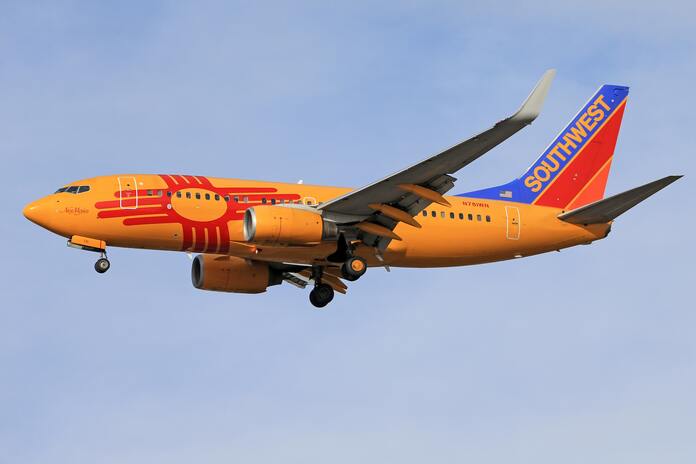Southwest Airlines Co. (NYSE:LUV) is currently grappling with the ongoing issue of rising expenses. The company is particularly concerned about the escalating fuel prices, which are impacting its financial outlook. Predictions for the third quarter of 2023 indicate that the economic fuel costs per gallon are anticipated to fall within the range of $2.55 to $2.65. Looking ahead to the full year of 2023, the estimated economic fuel costs per gallon have been adjusted to be in the bracket of $2.70 to $2.80, marking a revision from the previous projection of $2.60 to $2.70. These fuel-related expenditures remain a significant challenge for Southwest Airlines’ profitability.
In addition to the surge in fuel expenses, the company is also grappling with an increase in labor and airport costs, which is expected to impact its overall financial growth by causing a notable rise in operating expenses. During the second quarter of 2023, the consolidated unit cost, excluding fuel, oil, profit-sharing expenses, and special items, observed a year-on-year increase of 7.5%. This rise can be attributed to higher labor and airport costs, as well as reduced productivity levels. In light of these factors, Southwest Airlines anticipates that the cost per available seat mile (CASM), excluding fuel, oil, profit-sharing expenses, and special items, could witness an increase of 3.5% to 6.5% in the third quarter of 2023 compared to the same period in 2022.
The combination of these challenges has led to a decline of 6.4% in Southwest Airlines’ stock value over the course of this year, in contrast to the 12.7% growth observed in its respective industry.
However, despite these obstacles, the company is benefiting from the ongoing recovery in air-travel demand, particularly in the leisure segment. In the second quarter of 2023, the air traffic, measured by revenue passenger miles, recorded a substantial increase of 9.2% compared to the previous year, reaching a total of 35.50 billion. Moreover, the capacity or available seat miles (ASMs) witnessed a year-on-year growth of 14.1%, amounting to 42.58 billion. This growth was reflected in the load factor, which stood at 83.4%. Looking forward to the third quarter of 2023, the ASMs are predicted to improve by 12% compared to the figures from the previous year. Additionally, Southwest Airlines maintains its expectation for a 14% to 15% capacity improvement for the entire year of 2023 compared to 2022.
Featured Image: Unsplash









